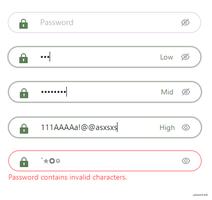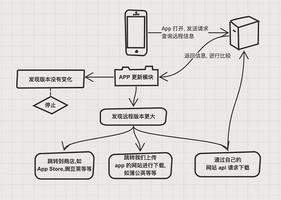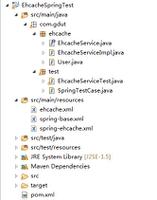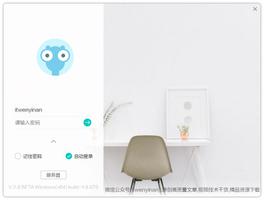react组件通信那些事儿

子组件向父组件通信:父组件给子组件传递props(callback函数),该函数必须将this绑定到父组件。子组件调用该函数,将子组件想要传递的信息,作为参数,传递到父组件的作用域中,实现子组件向父组件的通信。
原文链接:http://www.cnblogs.com/camille666/p/react_compoment_chat.html
父组件是调用组件的组件。
现在看来,感觉父组件就是一个壳子,定义好壳子里面会有什么,而子组件是一个具体的实现,说明,会用到什么东西,如果有这些东西,会进行什么操作。总之,父组件是材料,有水和泥,子组件告诉你,怎么制作水泥。
父组件给子组件输入什么,子组件就是什么。不同的父组件调用,或许可以呈现不同的输出,前提是在子组件里面要定义不同的接口,属性方法,供不同的父组件使用。
父子:Parent与Child_1、Child_2、Child_1_1、Child_1_2、Child_2_1
兄弟:Child_1与Child_2、Child_1_1与Child_2、etc
一、简单通信
1、父组件向子组件通信(props)
父组件给子组件传递props(属性),实现父组件向子组件的通信。
class Parent extends React.Component { state = {
msg: 'start'
};
componentDidMount() {
setTimeout(() => {
this.setState({
msg: 'end'
});
}, 1000);
}
render() {
return <Child_1 msg={this.state.msg} />;
}
}
class Child_1 extends React.Component {
render() {
return <p>{this.props.msg}</p>;
}
}
A、重点
发送方:<Child_1 msg="父组件向子组件通信" />
接收方:<p>{this.props.msg}</p>
B、插播
ES6明确规定,class里面只有静态方法,没有静态属性。自从有了静态属性的提案,可以在class里写实例属性和静态属性。之前都是在constructor里面初始化状态,现在可以直接写状态作为class的实例属性。
2、子组件向父组件通信(回调函数)
父组件给子组件传递props(callback函数),子组件调用该函数,将子组件想要传递的信息,作为参数,传递到父组件的作用域中,实现子组件向父组件的通信。
class Parent extends React.Component { state = {
msg: 'start'
};
fMsg(msg) {
this.setState({
msg
});
}
render() {
return (
<div>
<p>child msg: {this.state.msg}</p>
<Child_1 transferMsg={msg => this.fMsg(msg)} />
</div>
);
}
}
class Child_1 extends React.Component {
componentDidMount() {
setTimeout(() => {
this.props.transferMsg('end');
}, 1000);
}
render() {
return (
<div>
<p>child_1 component</p>
</div>
);
}
}
发送方:<Child_1 transferMsg={(msg) => {console.log(msg);}} />
接收方:<a onClick={this.props.transferMsg('子组件向父组件通信')}>子组件发送</a>
3、兄弟组件通信
A、状态提升
兄弟组件不能直接通过props进行消息传递,但是兄弟组件有相同的父元素,因此可以将需要传递的数据挂载在父组件中,由两个兄弟组件共享。
由Child_1向Child_2进行通讯,我们可以先通过Child_1向Parent进行通讯,再由Parent向Child_2进行通讯。
class Parent extends React.Component { state = {
msg: 'start'
};
fMsg(msg) {
this.setState({
msg
});
}
componentDidUpdate() {
console.log('Parent update');
}
render() {
return (
<div>
<Child_1 transferMsg={msg => this.fMsg(msg)} />
<Child_2 msg={this.state.msg} />
</div>
);
}
}
class Child_1 extends React.Component {
componentDidMount() {
setTimeout(() => {
this.props.transferMsg('end');
}, 1000);
}
componentDidUpdate() {
console.log('Child_1 update');
}
render() {
return (
<div>
<p>child_1 component</p>
</div>
)
}
}
class Child_2 extends React.Component {
componentDidUpdate() {
console.log('Child_2 update');
}
render() {
return (
<div>
<p>child_2 component: {this.props.msg}</p>
</div>
)
}
}
这种方式耦合比较严重,父组件承担了本来与自己无关的功能。每次进行消息传递都会触发父组件和子组件的生命周期,如果消息传递比较频繁,会造成很大的浪费。
B、观察者模式
import eventProxy from '../eventProxy';class Parent extends React.Component {
render() {
return (
<div>
<Child_1 />
<Child_2 />
</div>
);
}
}
class Child_1 extends React.Component {
componentDidMount() {
setTimeout(() => {
// 发布者,发布msg事件
eventProxy.trigger('msg', 'end');
}, 1000);
}
}
class Child_2 extends React.Component {
state = {
msg: 'start'
};
componentDidMount() {
// 订阅者,监听msg事件
eventProxy.on('msg', (msg) => {
this.setState({
msg
});
});
}
render() {
return (
<div>
<p>child_2 component: {this.state.msg}</p>
</div>
)
}
}
4、跨级组件通信
如果父组件与子组件之间不止一个层级,如Parent与Child_1_1这样的关系,该怎么通信呢?
A、层层传递
可通过...运算符(Object 剩余和展开属性),将父组件的信息,以更简洁的方式传递给更深层级的子组件。
// 通过...运算符向Child_1_1传递Parent组件的信息class Child_1 extends React.Component {
render() {
return (
<div>
<p>{this.props.msg}</p>
<Child_1_1 {...this.props} />
</div>
)
}
}
class Child_1_1 extends React.Component {
render() {
return <p>{this.props.msg}</p>;
}
}
B、context对象
context相当于一个全局变量,是一个大容器,我们可以把要通信的内容放在这个容器中,这样一来,不管嵌套有多深,都可以随意取用。
如果是父组件向子组件单向通信,可以使用变量,如果子组件想向父组件通信,同样可以由父组件提供一个回调函数,供子组件调用,回传参数。
上级组件要声明自己支持context,指定组件的childContextTypes属性,并提供一个getChildContext函数来返回初始的context对象;
子组件要声明自己需要使用context,指定组件的contextTypes属性,就可以通过this.context访问这个共同的环境对象。
class Parent extends React.Component { getChildContext() {
return {
color: 'red',
cbFun: this.fCallback.bind(this)
};
}
fCallback(msg) {
console.log(msg);
}
render() {
return <Child_1 />;
}
}
Parent.childContextTypes = {
color: PropTypes.string,
cbFun: PropTypes.func
}
class Child_1 extends React.Component {
render() {
return <Child_1_1 />;
}
}
class Child_1_1 extends React.Component {
static contextTypes = {
color: PropTypes.string,
cbFun: PropTypes.func
}
render() {
const styles = { color: this.context.color };
const cb = (msg) => {
return () => {
this.context.cbFun(msg);
}
}
return (
<button style={styles} onClick={cb('子组件向父组件传数据。')}>点击</button>
)
}
}
我们不应该也不能直接改变context对象中的属性,要想改变context对象,只有让其和父组件的state或者props进行关联,在父组件的state或props变化时,会自动调用getChildContext方法,返回新的context对象,而后子组件进行相应的渲染。
class Parent extends React.Component { constructor(props) {
super(props);
this.state = {
color: "red"
}
}
getChildContext() {
return {
color: this.state.color,
cbFun: this.fCallback.bind(this)
};
}
fCallback(color) {
this.setState({color});
}
render() {
return <Child_1 />;
}
}
Parent.childContextTypes = {
color: PropTypes.string,
cbFun: PropTypes.func
}
class Child_1 extends React.Component {
render() {
return <Child_1_1 />;
}
}
class Child_1_1 extends React.Component {
static contextTypes = {
color: PropTypes.string,
cbFun: PropTypes.func
}
render() {
const styles = { color: this.context.color };
const cb = (msg) => {
return () => {
this.context.cbFun(msg);
}
}
return (
<button style={styles} onClick={cb('blue')}>点击</button>
)
}
}
以上是 react组件通信那些事儿 的全部内容, 来源链接: utcz.com/z/383387.html







